Asbestos: Popcorn Ceiling
There are millions of homes with textured popcorn ceilings and walls in the U.S., some of which contain asbestos materials. It is not possible to tell if there is asbestos material in the texturing merely by looking at it. In order to tell if there is asbestos, a sample would need to be sent to a lab. Many buyers choose to leave the popcorn ceilings just as they are, others choose to remove the texturing.
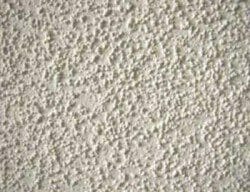
If the textured material has asbestos material in it, it can still be left in place. Generally, it is not an immediate health concern, unless the material is friable, damaged or flaking. Should a buyer want to remove the material on their own, there are certain guidelines and rules that should be followed. A professional contractor can also be hired to remove the material. It is generally very easy to remove and takes very little time to do so. Either way, EPA guidelines should be followed. Good information is available on the EPA website, as well as many state websites.

The EPA website states:
Asbestos-containing materials that aren’t damaged or disturbed are not likely to pose a health risk. Usually the best thing is to leave asbestos-containing material alone if it is in good condition.
Generally, asbestos-containing material that is in good condition and will not be disturbed (by remodeling, for example) will not release asbestos fibers.
Asbestos was banned in ceiling treatments in the United States by the Clean Air Act of 1978.
It is always prudent to be knowledgeable about asbestos, but also, remember that asbestos was:
- In blow dryers up until sometime in the 1980’s (blowing into our face)
- Used in brake linings up until sometime in the 1990’s
- Used in over 3,000 consumer and building products in the last century
Other areas in homes that may contain asbestos
- Old boiler and duct insulation
- Old cloth duct tape
- “Paper” under wood shingle roofs, 9 x 9 and 12 x 12 floor tiles
- “Paper” backing on sheet vinyl flooring
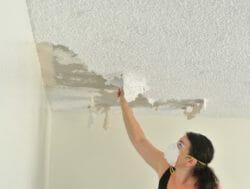
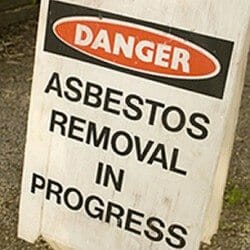
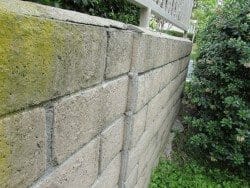

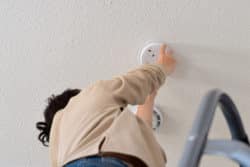

The information above was very helpful.
I live in a home that was built in 1948 and my living room has a popcorn ceiling with the sparkles in it. (I rather like it!) My brother is a contractor and has assured me that there is no health concern unless the ceiling is disturbed, as you indicated above. However, I have a friend who developed mesothelioma simply by living in a home with a ceiling that had asbestos in it. (I have to say that after doing some of my own research on asbestos I realize I haven’t asked my friend enough questions about his situation ~ e.g., exactly what kind of ceiling was in his home, was it deteriorating, etc.??)
My question for you is whether a fire that I had in my home, about 12 years ago, in the attic, not in the living room but above it, might have created any “disturbance” in the living room ceiling that I should have been concerned about? (I hope this made sense.) I didn’t need to make any repairs to my living room ceiling after the fire and my brother hasn’t expressed any concern to me since the fire. However, since my friend developed mesothelioma I’ve become more vigilant about my asbestos.
Thank you.
Laura